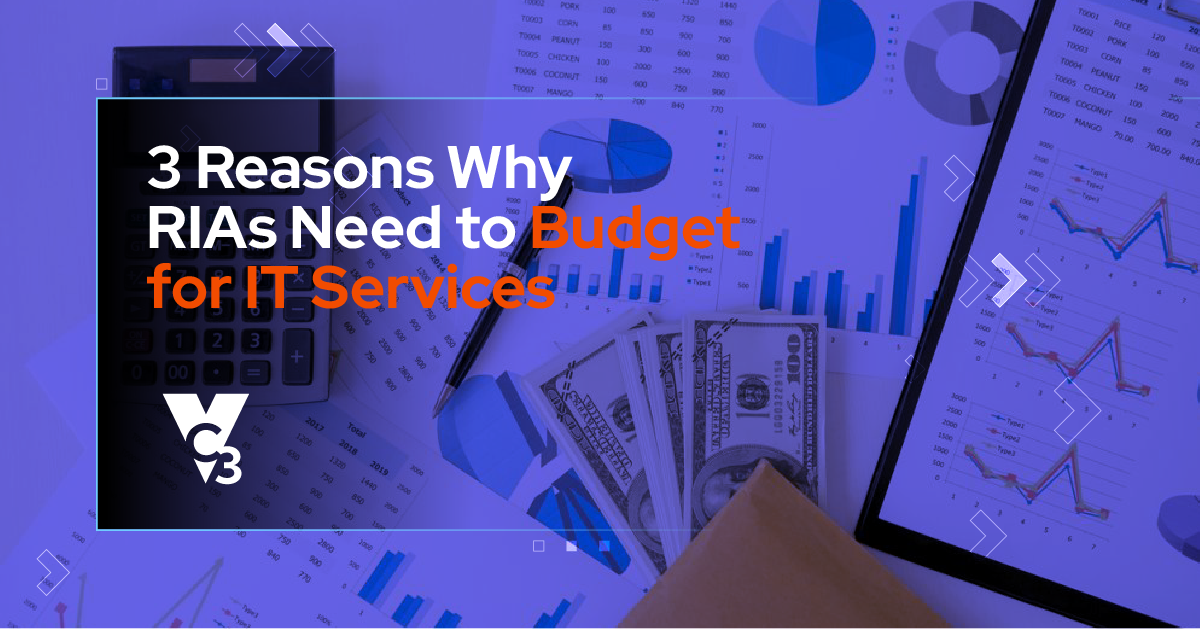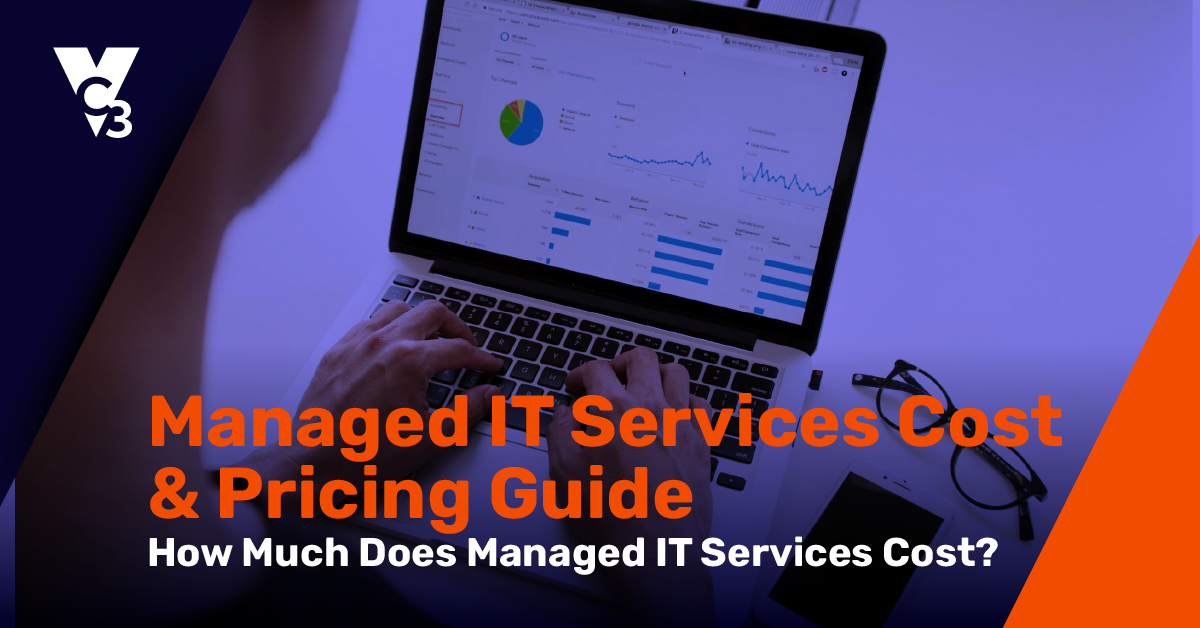Information technology is a critical part of a municipality’s annual spending. Yet, we find that many municipalities often don’t know where to begin with IT budgeting. It’s important for towns and cities to flesh out a fairly detailed IT budget to help uncover inefficiencies, save money, and better execute operational goals.
This article gives you a high-level overview about using your IT budgeting process to help fix what’s broken, find ways to save money in the long-term, and execute your municipality’s strategic vision.
Part I: Fixing What’s Broken
While it might seem like broken technology has little to do with municipal budgeting, your IT budget can reveal how outdated hardware or underinvestment might be costing you money each year. Bad technology impacts your bottom line every day, and it’s often a hidden source of increased expenses.
For a great place to begin analyzing your IT budget, ask yourself the following questions about your technology.
- Is my data backup tested and operational? All it takes is one data loss incident to significantly impact a municipality’s budget. If you cannot recover or use your data for days or weeks, you impact municipal operations and risk increased expenses. We find that IT costs skyrocket for towns and cities that use inadequate data backup solutions, especially when a server fails and they cannot recover the data without time-consuming, expensive help.
- Is my hardware more than five years old? Old hardware results in processing delays, server and desktop failure, and lost productivity. While you might feel you’re maximizing an investment by keeping hardware until it dies, hardware gives you significantly diminishing returns after 3-5 years—costing you money once it becomes obsolete, ineffective, and unable to meet the demands of municipal business.
- Have I recently evaluated our Internet Service Provider or telecom provider? If you’ve used your current providers for many years, or if you’re locked into a multi-year contract, those are clear signs that you could potentially shop around and potentially lower your ISP/telecom costs. We’ve seen many towns and cities unknowingly suffering from poor yet expensive service, when higher quality and less expensive service exists. If you’ve neglected to examine or challenge this line item for many years, it may be ripe for potentially saving you money. (If only one ISP or telecom provider services your area, you can still re-evaluate your costs with them or see if your IT provider can introduce you to alternatives.)
- Are my IT support costs unpredictable? Many towns and cities use IT vendors or contractors that seem inexpensive on the surface but usually gouge a municipality’s budget with expensive and unpredictable billing during the year. If your annual IT support costs are too unpredictable, you can save money with a more efficient model that includes proactive IT support with a predictable monthly fee.
By examining these important questions first, you’ll often find low hanging fruit and ways to slash your IT budget immediately. These reductions can often be significant, even for smaller towns and cities where it might not seem like you’re spending a lot on IT.
Part II: Maximizing Your IT Investments
Creating sound long-term IT investments helps you from a budget standpoint and allows you to benefit from the evolution of various technologies. Many times, towns and cities do not understand when their technology investments are overkill, unnecessarily expensive, or simply outdone by better, more current technologies.
Ask yourself the following questions to see if your IT spending is maximizing every dollar you invest.
- Do I need all my hardware? With cloud computing, many systems and services previously needing onsite servers are now accessible through the internet. In many cases, towns and cities can significantly scale down the amount of hardware they have onsite and only spend time and effort maintaining essential servers. (To use the cloud, you'll need an internet service provider that gives you enough bandwidth to make it an option. If you lack enough bandwidth, your IT provider may be able to find you alternative options.)
- Do I have a hardware lifecycle replacement plan? Towns and cities that plan to replace their hardware after 3-5 years do the best job of maximizing those investments. Hardware becomes slow, obsolete, and unsupported after 3-5 years, which results in increased maintenance costs and decreased productivity. You should decommission and replace servers and workstations according to a lifecycle that suits your organization, but it should be no more than every 5 years.
- Have I evaluated my software lately? When did you originally buy your current software programs? When was the last time you shopped around for a better solution? Just like with hardware, many software programs have become better and cheaper through the cloud. By “subscribing” to software per user, you avoid paying for expensive servers and software licenses.
- Do I have all my IT support needs covered? Many towns and cities often have minimal IT staff, or no IT staff at all. They often rely on IT vendors that only show up when a major problem occurs. Proactive maintenance requires a slightly higher initial investment than a reactive IT model, but you will see savings in the long-term from no longer paying to fix recurring problems that seem to never go away.
- Do I waste time on manual data backup? Manual data backup is expensive, time-consuming, and risky. It costs a lot of money to purchase and store portable media, it takes staff time to perform the backups and place them in a secure location, and the process tends to be risky since the backups are irregularly tested. Automated data backup may be a better investment in terms of cost, certainty, and productivity.
When looking at your IT investments long-term, you are evaluating whether you are receiving the best services for your municipality. Examine your IT budget every year with rigour.
Part III: Let Technology Spur Your Vision
Many towns and cities often separate vision conversations from technology conversations. If you talk about vision without talking technology, you either create unrealistic expectations or you fail to realize what’s possible. If you talk about technology without talking about vision, you either dwell too much on tactical planning or make decisions about key municipal investments that may have nothing to do with overall goals.
Here are some of the highest-level and most visionary IT budgeting action items you need to consider.
- Connect your municipality’s vision with technology. This means getting your visionaries and IT experts in the same room together. Work through your vision by department, and list things that you want to accomplish for city hall, finance, economic development, parks and recreation, etc. It helps to set visionary goals first before becoming limited by technology.
- Create a list of projects with options. Divide up your vision into specific projects that should take place over the next 3-5 years. Your IT expert should be able to assess those projects and offer options. For example, you may want an expensive accounting system that fulfills all your demands, but your IT expert provides an option that has 95% of what you want for 50% of the cost.
- Don’t forget any operational goals. When visioning for the next few years, you need to rely on IT to have a conversation about important operational goals. As technologies improve and standards continue to increase, the demands on IT will grow. Are there ways to make accounting, finance, city hall, or other departments more efficient? Do technologies exist that can help towns and cities accomplish certain tasks better?
- Think about making residents happier and more informed. While probably a part of your municipality’s vision, it’s worth noting separately that resident services should always be a part of your planning. For example, think about what kinds of information towns and cities need. Explore ways to improve your website, broadcast tools, and social media. Or think about ways to improve the online payment process and offer more resident services online. Residents continually demand more information, transparency, and services from towns and cities, and technology can help you keep up with making your taxpayers happy.
All in all, embrace IT budgeting as an opportunity to enable your overall budgeting. Once you fix your broken technology, begin to truly maximize your IT investments, and connect your vision with technology, your municipality will make positive leaps forward in ways that you never before imagined.
Need help with your municipal budgeting? Reach out to us today through the form below.





